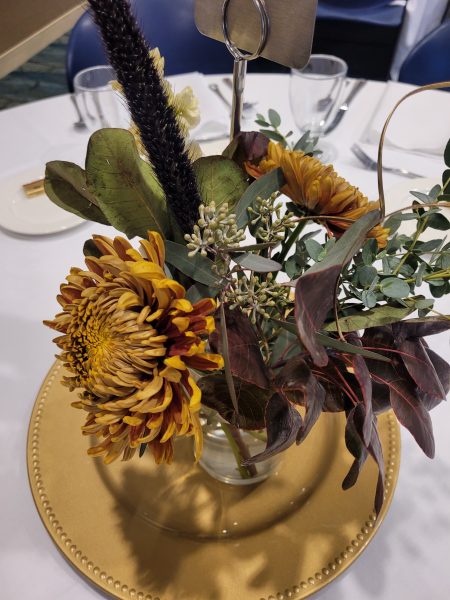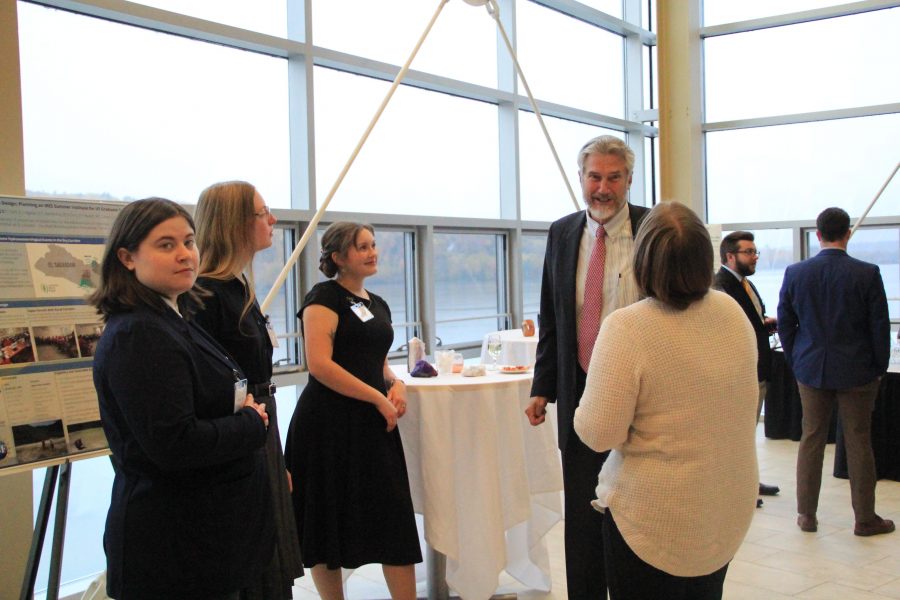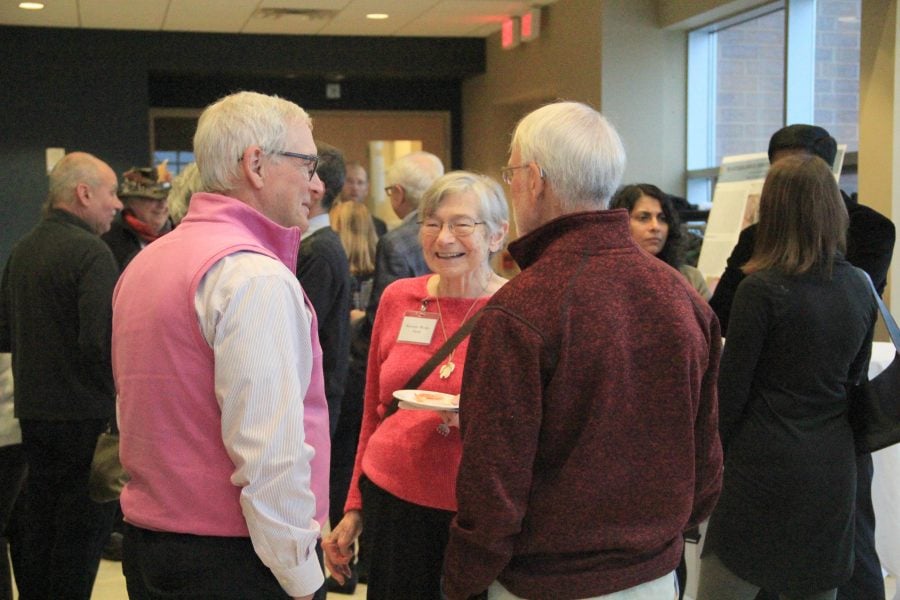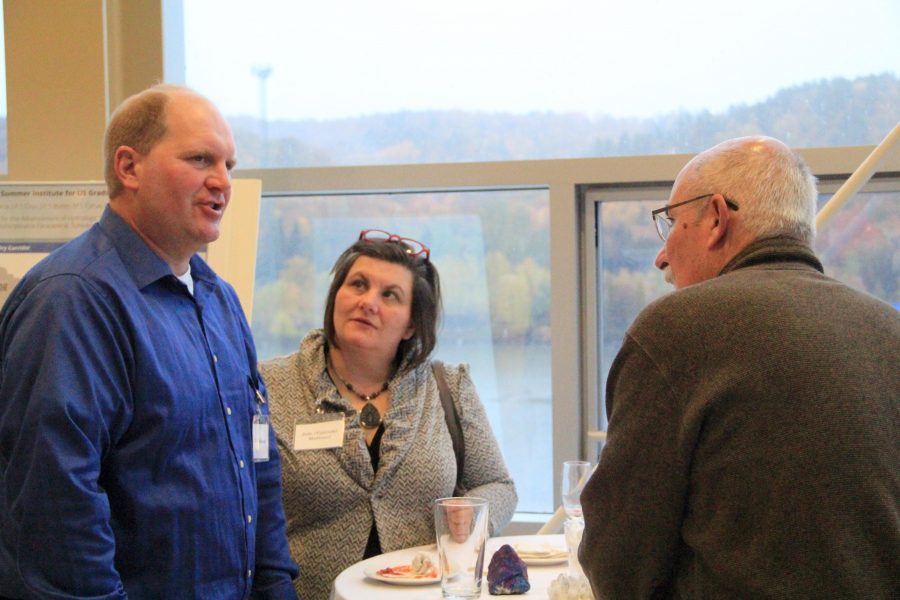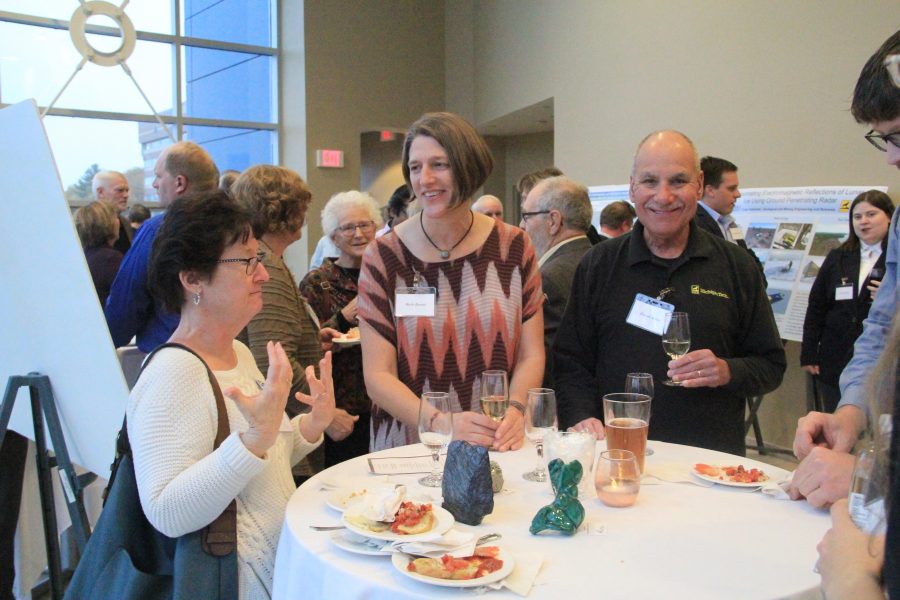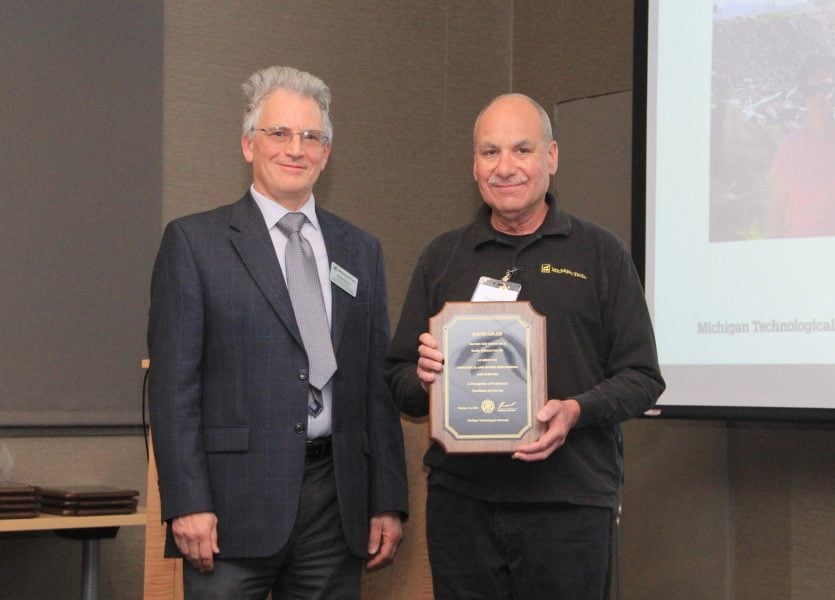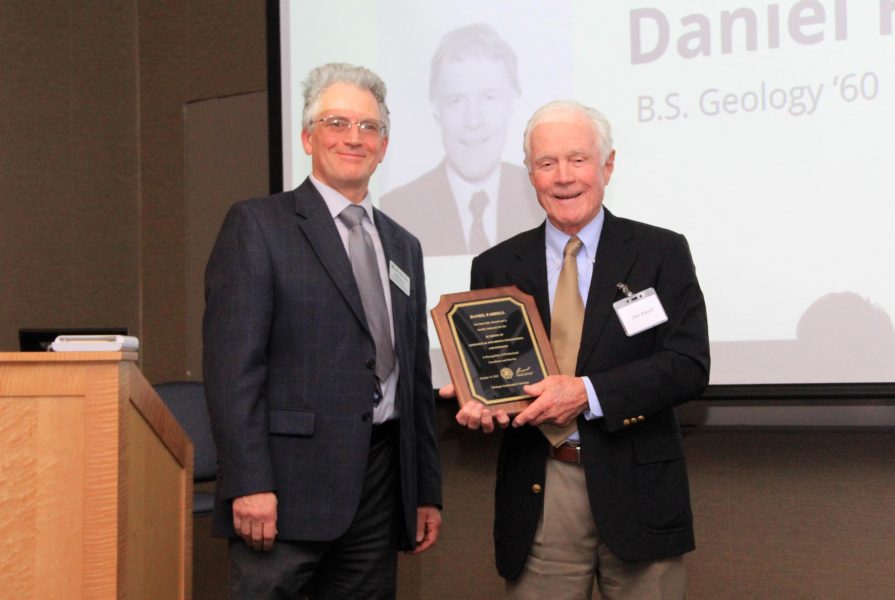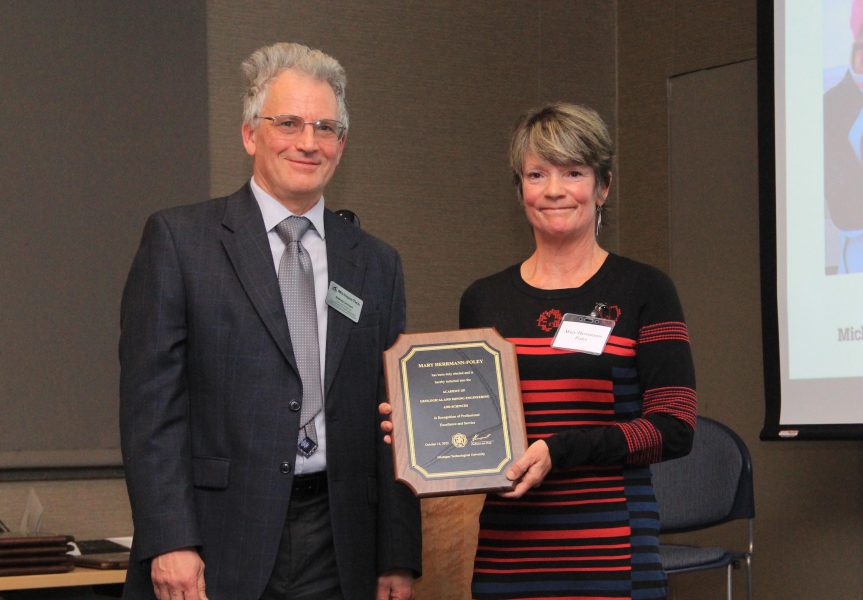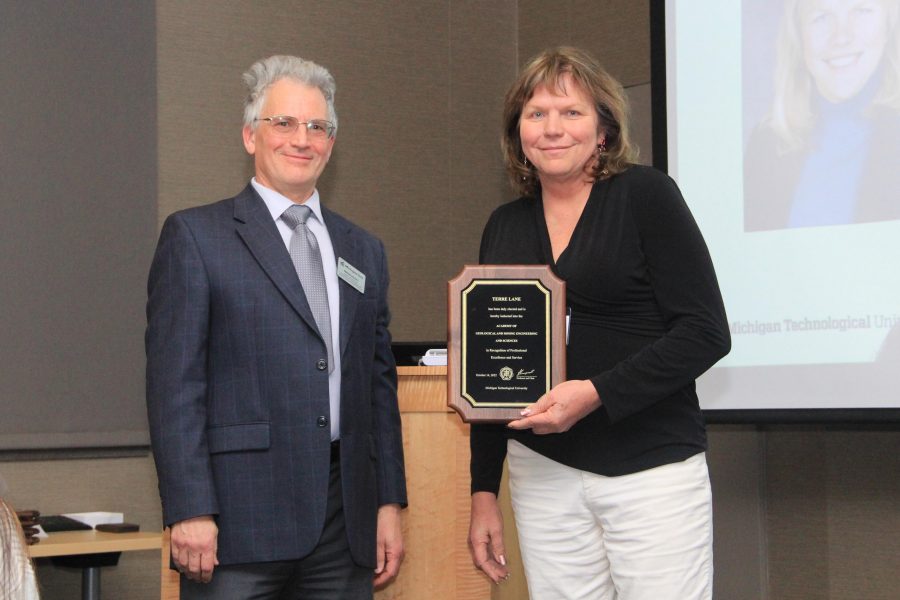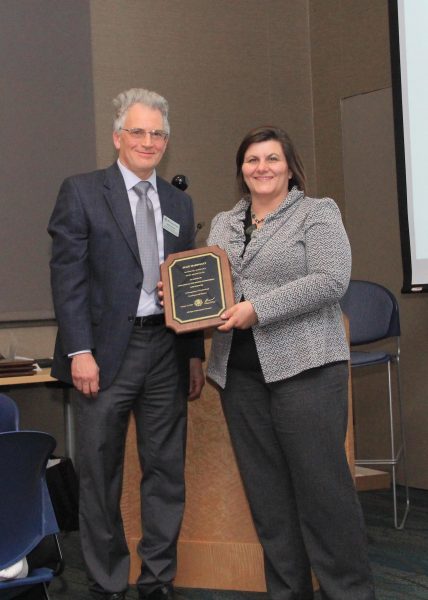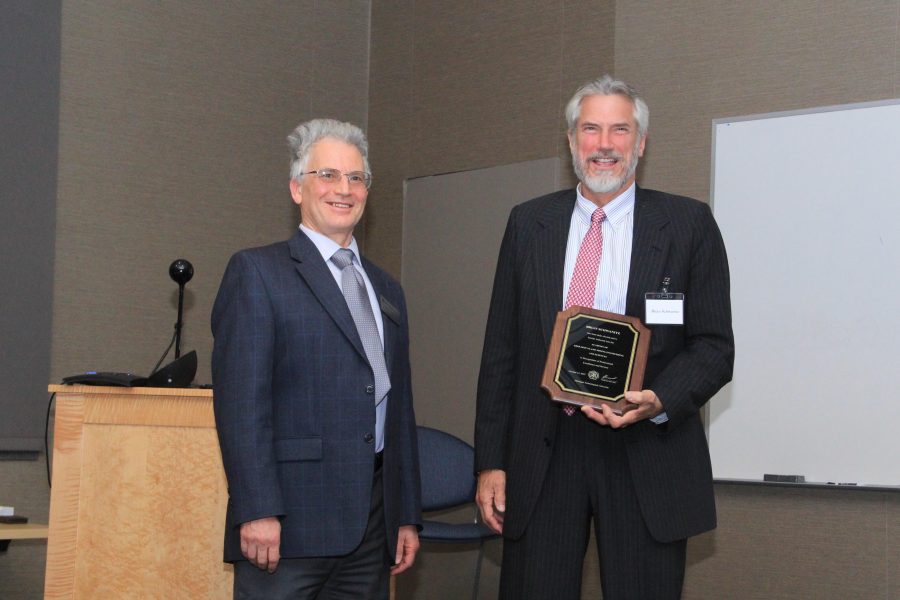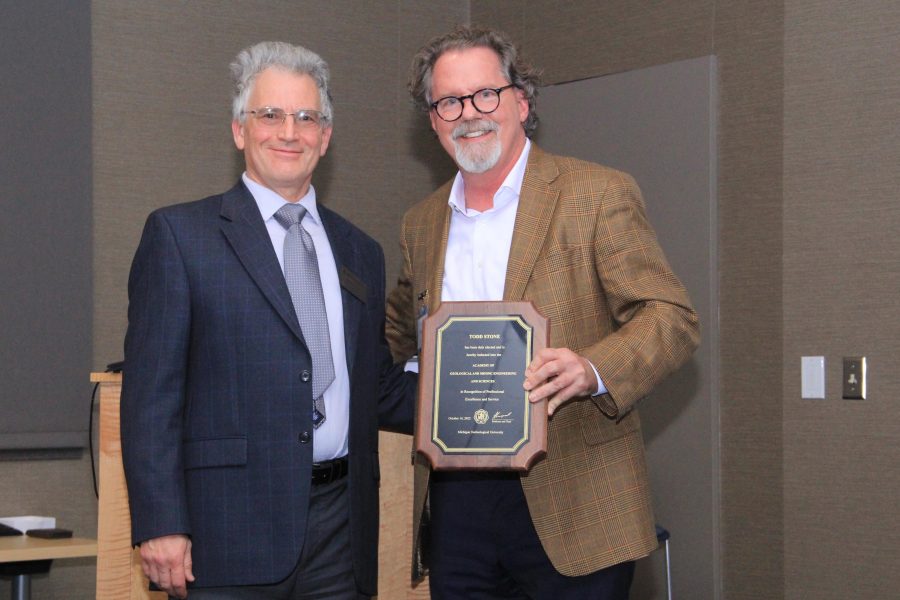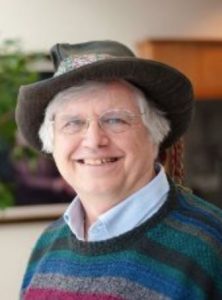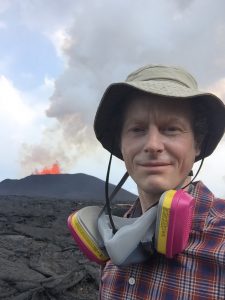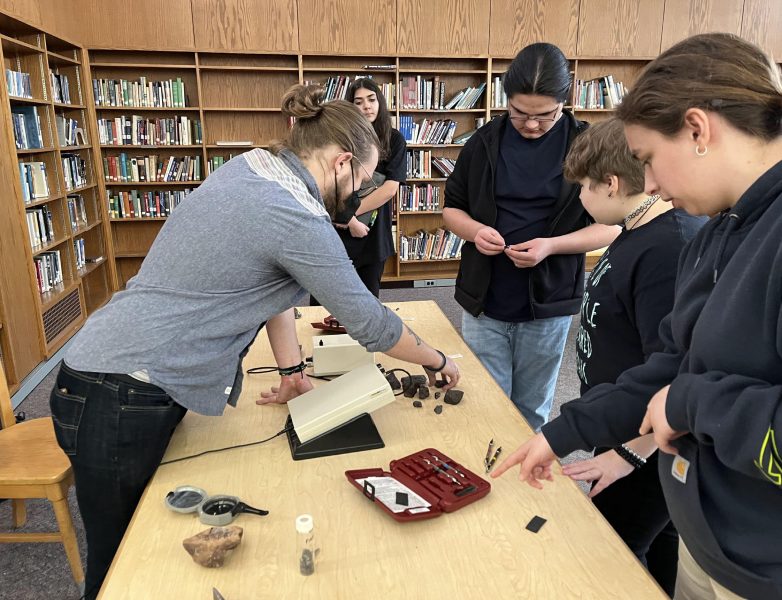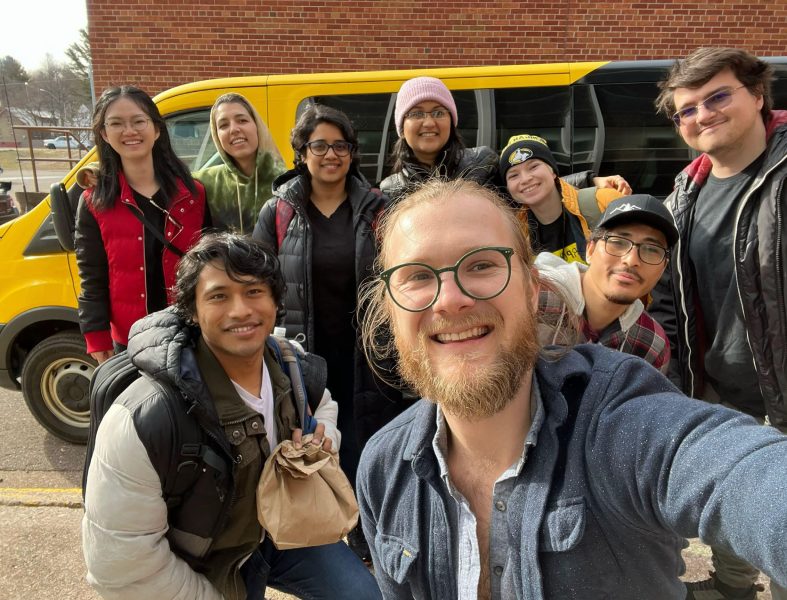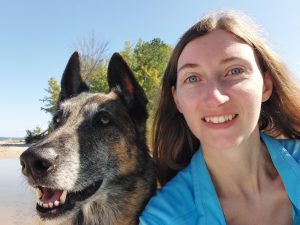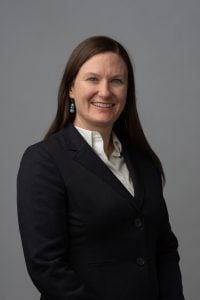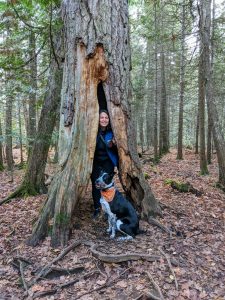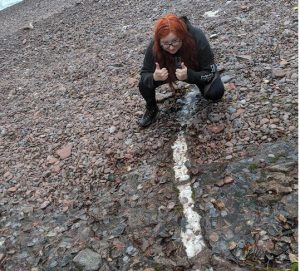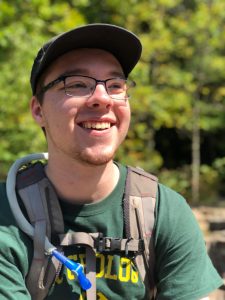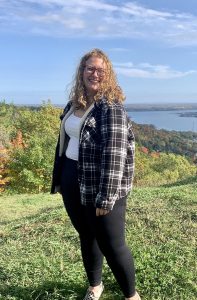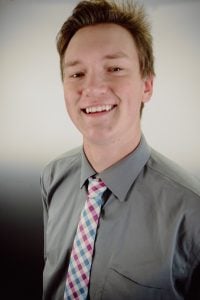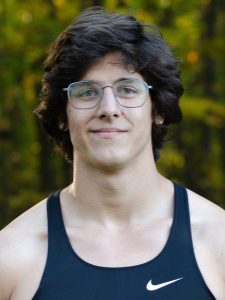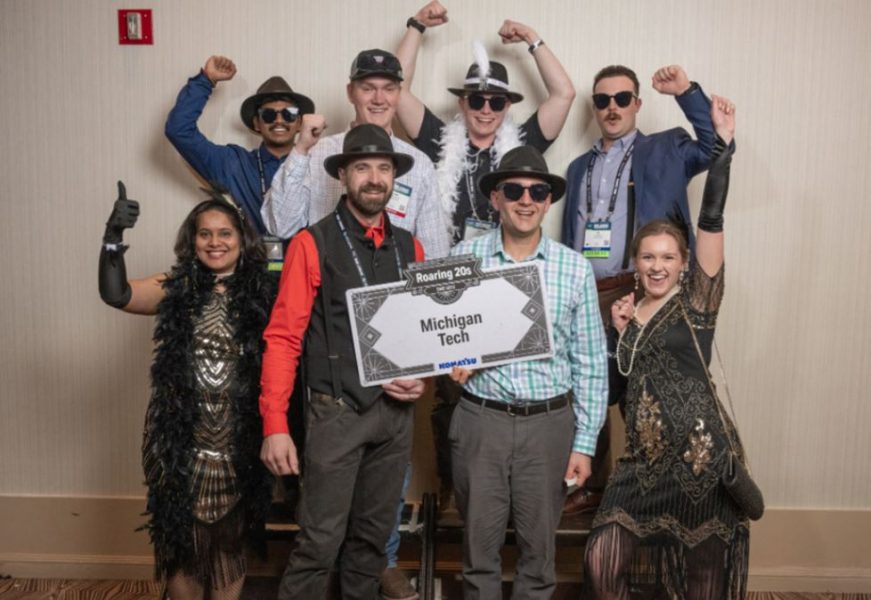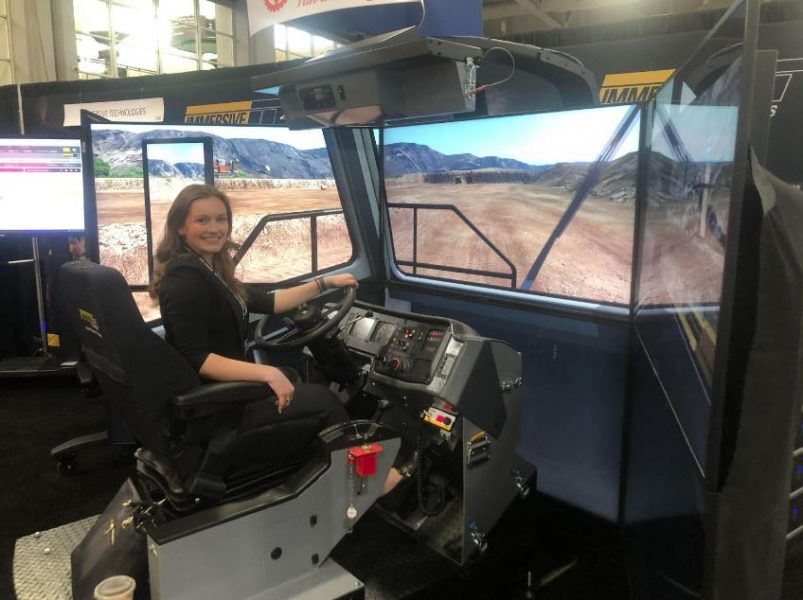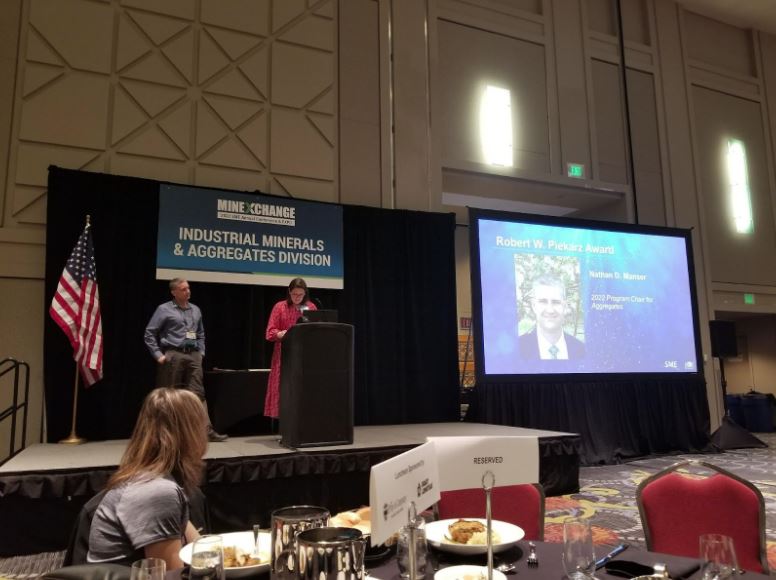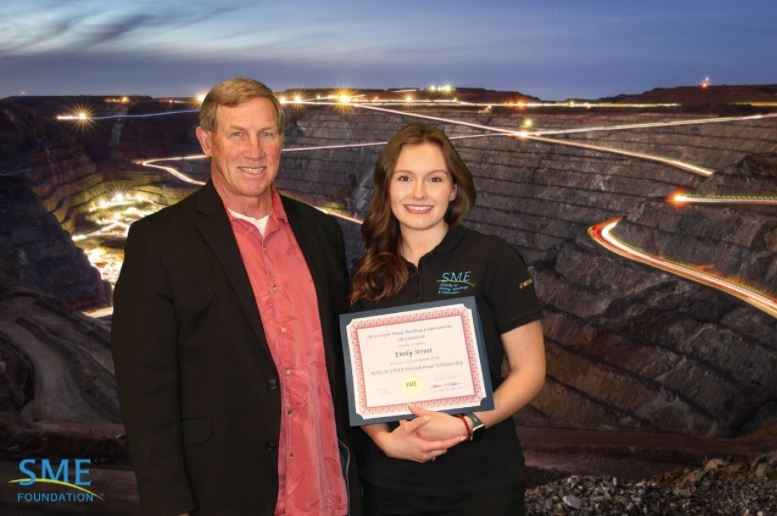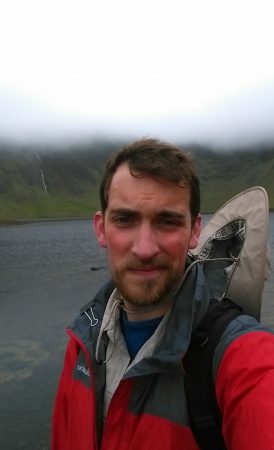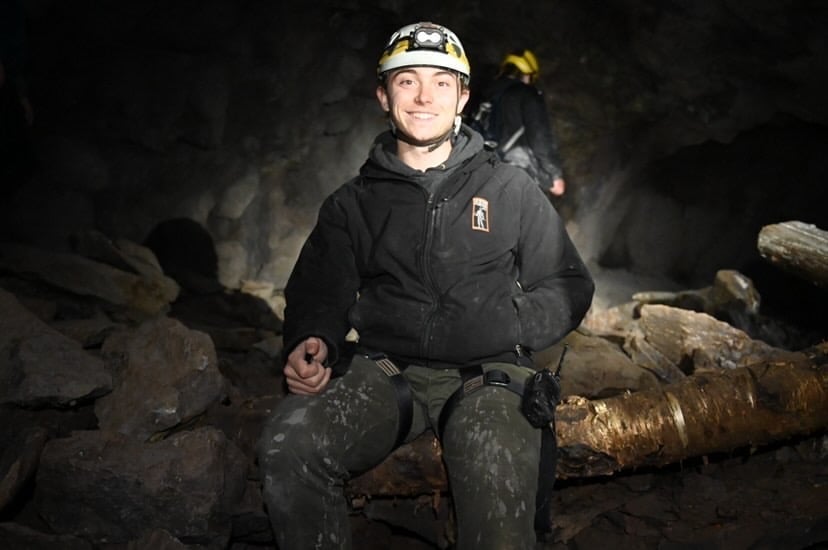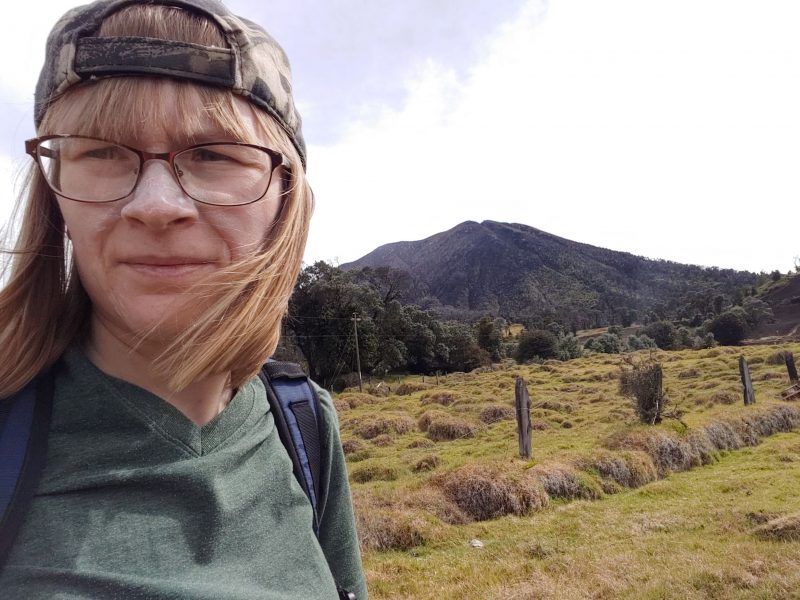The Michigan Tech Department of Geological and Mining Engineering and Sciences (GMES) inducted eight alumni into the GMES Academy on October 14, 2022. Held in the Great Lakes Research Center overlooking the fall foliage, sixty-two people were in attendance at the invite-only induction ceremony, including faculty, staff, current Academy members, and select students. The Academy honors alums who have made a significant impact in their professions and others who have made extraordinary contributions to the department’s advancement.
Celebrations continued on October 15 with a tour of the A.E. Seaman Mineral Museum led by curator Dr. John Jaszczak, followed by a pasty luncheon and apple pressing hosted by the Gierke Blueberry Farm.
The 2022 GMES Academy members include:
David Adler ‘82 B.S. Geology
Daniel Farrell ‘60 B.S. Mining Engineering
Mary Herrmann-Foley ‘83 B.S. Geological Engineering
Terre Lane ‘82 B.S. Mining Engineering
Julie (Varichak) Marinucci ‘02 B.S. Mining Engineering
Richard Saccany ‘71 B.S. Mining Engineering
Brian Schwanitz ‘77 B.S. Applied Geophysics
Todd Stone ‘85 B.S. Geological Engineering
Congratulations on your well-deserved recognition to Dave, Dan, Mary, Terre, Julie, Rich, Brian, and Todd. You are all an inspiration to all of us!
GMES gives special thanks to those who made the event possible: MUB Catering, Great Lakes Research Center, Copper Island Engraving, Jim’s Foodmart, Audra Morse, Shelle Sandell, John Jaszczak, A.E. Seaman Mineral Museum, Protea Floral, Roy’s Bakery, Tony’s Kitchen, John & Lynn Gierke, and Dean Callahan’s support and high-level snapshot into the future of Michigan Tech.
